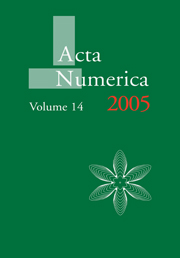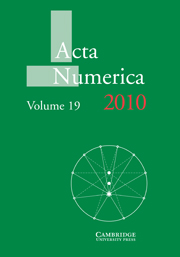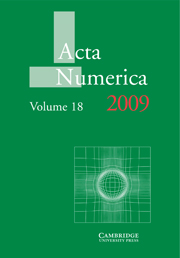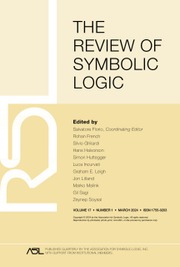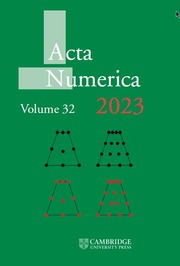Introduction to Numerical Continuation Methods
Numerical continuation methods have provided important contributions toward the numerical solution of nonlinear systems of equations for many years. The methods may be used not only to compute solutions, which might otherwise be hard to obtain, but also to gain insight into qualitative properties of the solutions. Introduction to Numerical Continuation Methods, originally published in 1979, was the first book to provide easy access to the numerical aspects of predictor corrector continuation and piecewise linear continuation methods. Not only do these seemingly distinct methods share many common features and general principles, they can be numerically implemented in similar ways. Introduction to Numerical Continuation Methods also features the piecewise linear approximation of implicitly defined surfaces, the algorithms of which are frequently used in computer graphics, mesh generation, and the evaluation of surface integrals.
Product details
January 1987Paperback
9780898715446
414 pages
254 × 177 × 19 mm
0.726kg
This item is not supplied by Cambridge University Press in your region. Please contact Soc for Industrial & Applied Mathematics for availability.
Table of Contents
- Table of Pseudo Codes
- Preface to the Classics Edition
- Foreword
- 1. Introduction
- 2. The Basic Principles of Continuation Methods
- 3. Newton's Method as Corrector
- 4. Solving the Linear Systems
- 5. Convergence of Euler-Newton-Like Methods
- 6. Steplength Adaptations for the Predictor
- 7. Predictor-Corrector Methods Using Updating
- 8. Detection of Bifurcation Points Along a Curve
- 9. Calculating Special Points of the Solution Curve
- 10. Large Scale Problems
- 11. Numerically Implementable Existence Proofs
- 12. PL Continuation Methods
- 13. PL Homotopy Algorithms
- 14. General PL Algorithms on PL Manifolds
- 15. Approximating Implicitly De¯ned Manifolds
- 16. Update Methods and their Numerical Stability
- Appendix 1. A Simple PC Continuation Method
- Appendix 2. A PL Homotopy Method
- Appendix 3. A Simple Euler Newton Update Method
- Appendix 4. A Continuation Algorithm for Handling Bifurcation
- Appendix 5. A PL Surface Generator
- Appendix 6. SCOUT | Simplicial Continuation Utilities
- Bibliography
- Index and Notation.


